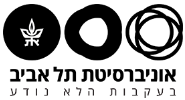22/5/16
You are invited to attend a lecture
By
NANO-ANTENNA ARRAY CHARACTERIZATION, DESIGN, AND APPLICATIONS
Zeev Iluz
Ph.D. student of
Professor Amir Boag of Electrical Engineering, Physical Electronics Department Tel Aviv University
At radio frequencies (RF), antenna array active impedance is conventionally determined via direct S-parameter measurements. This approach is impossible to implement for optical nano-antenna arrays. The first part of this work describes a technique for evaluating antenna array active impedance based on scattering fields’ measurements, using different loads at the antenna’s terminal. This technique can also be used for optical sensor applications, since the scattering data of a nano-antenna array, loaded with unknown loads, can be used to determine the reflection coefficient of the loads. The theoretical formulation, followed by simulations and measurements demonstrate the advantages of this technique. The suggested measurement technique was fully validated in the RF band, including measurements of unknown load.
The second part of this work involved the design of a new, wideband and an efficient nanoantenna array in optics. A Dual-Vivaldi nanoantenna is proposed to demonstrate the possibility of wideband operation at IR and visible frequencies. The Dual-Vivaldi nanoantenna arrays were designed, fabricated, and optically characterized. The radiation efficiency and the spectral response of the antennas were found to be in good agreement with numerical simulations. The results presented here demonstrate the extremely wideband nature of the antenna and the strong impact of load at the antenna’s terminals on its scattering response.
The last part of this work focused on the application aspect, meaning taking “old” ideas from the RF and implementing/transforming them in the optical frequency range. In many cases, this transformation cannot be done in a straightforward way, and the proper adjustment or a complete new concept is required for an efficient device.
The optical devices developed in this work include a new refractive index sensor which is based on the antenna array scan blindness. While in RF the scan blindness is avoided, in optics it is used to enhance the sensor performance. The second device is an optical reflectarray with high efficiency due to the concept of multi-elements in the unit cell. The multi-elements concept generates several phase / losses vs. dimensions curves, which
enables the option to minimize the losses for a desired phase value. The third device is optical phased array with wide scan angle capability. A new geometry, consisting of dielectric waveguide coupled to a nanoantenna patch, is presented. This structure supports small array spacing and therefore a wide angle scan.
Sunday, May 22, 2016, at 12:00
Room 011, Kitot Building

